Last week Doungchann, our administrative assistant, and I went to test drive the Voltra Matrix. This is the first ‘made in Cambodia’ electric moto. If you’ve been to Phnom Penh, you know that the air and noise pollution are major problems. Cambodia is also consistently ranked as one of the top ten countries in the world most vulnerable to climate change by the UNDP. While Cambodia is far from a top carbon emitter, switching to low carbon transportation is a way for us to lessen our carbon footprint on the local level. One of MCC Cambodia’s environmental stewardship goals, along with eliminating single use plastic, is to switch to electric for motos in Phnom Penh. We’re planning to purchase our first electric moto next month and will use it for a few months as a pilot. If all goes well, then we’ll purchase more before the end of the fiscal year in April 2022 and completely phase out gasoline moto use in Phnom Penh.
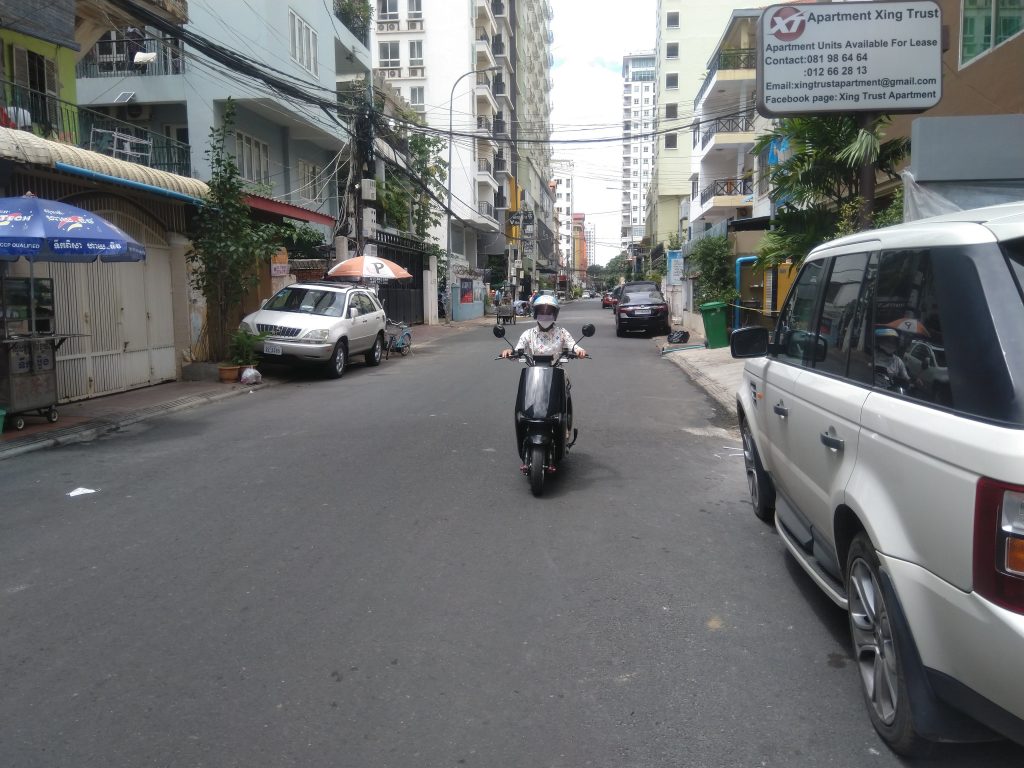
Price
The Voltra Matrix moto costs around $1,450 dollars. This is approximately 60% of the price of an imported gasoline moto. It has much lower maintenance requirements but the flip side is that the battery will need replaced every 3-4 years (for now at least, battery technology is constantly improving). The cost of ‘fuel’ is substantially lower than that of a gasoline moto (note that gasoline for a moto is already cheap so it’s savings along the lines of $3 dollars a month versus .25 cents a month).
Since the Matrix is cheaper than a new gasoline moto, we’re in a position where we can pay for this shift entirely budget neutral by selling off our older gasoline motos. For now, we’re keeping the newer gasoline motos for use in the countryside where travel and road conditions are more rigorous. But in the future, as electric motos continue to improve, we hope to completely phase out gasoline motos.
Specs
Voltra is planning to export it’s machines to the European Union and they were designed to meet European road standards. The Matrix can carry up to around 440 pounds so it’s strong enough for me to take both girls to school or go to a meeting with Crystal. Performance wise it compares very well to our gasoline moto except for ‘refueling’ – it takes 5 hours for the battery charge, which is great overnight, but it means that a long trip isn’t feasible without carting along a second battery (which can fit into the under seat compartment). I never go on 100 kilometer trips on moto these days but I did when during my last term when I lived in Prey Veng and was visiting irrigation sites.
- Motor power: 1500 W
- Battery type: Lithium Li-ion 60V28Ah (Removable battery)
- 3 Speeds adjustment:
- 1st = 40km/h – range: 100km
- 2nd =50km/h – range: 85km
- 3rd = 60km/h – range: 70km
- Reverse gear (Narrow parking assistance)
- Charging time: 5 hours (Aluminum/Alloy charger 5A)
- Brake system: Front and Rear disk brakes
- Full LED lightening
- Weight of e-motorcycle: 85 Kg
- Battery weight: 9.9 kg
- Maximum load capacity: 200kg
- Electric Consumption: 1200 riels = 100 km range
- Warranty 2 years or 30,000km
The Voltra Matrix had a ton of little design choices that I appreciated.
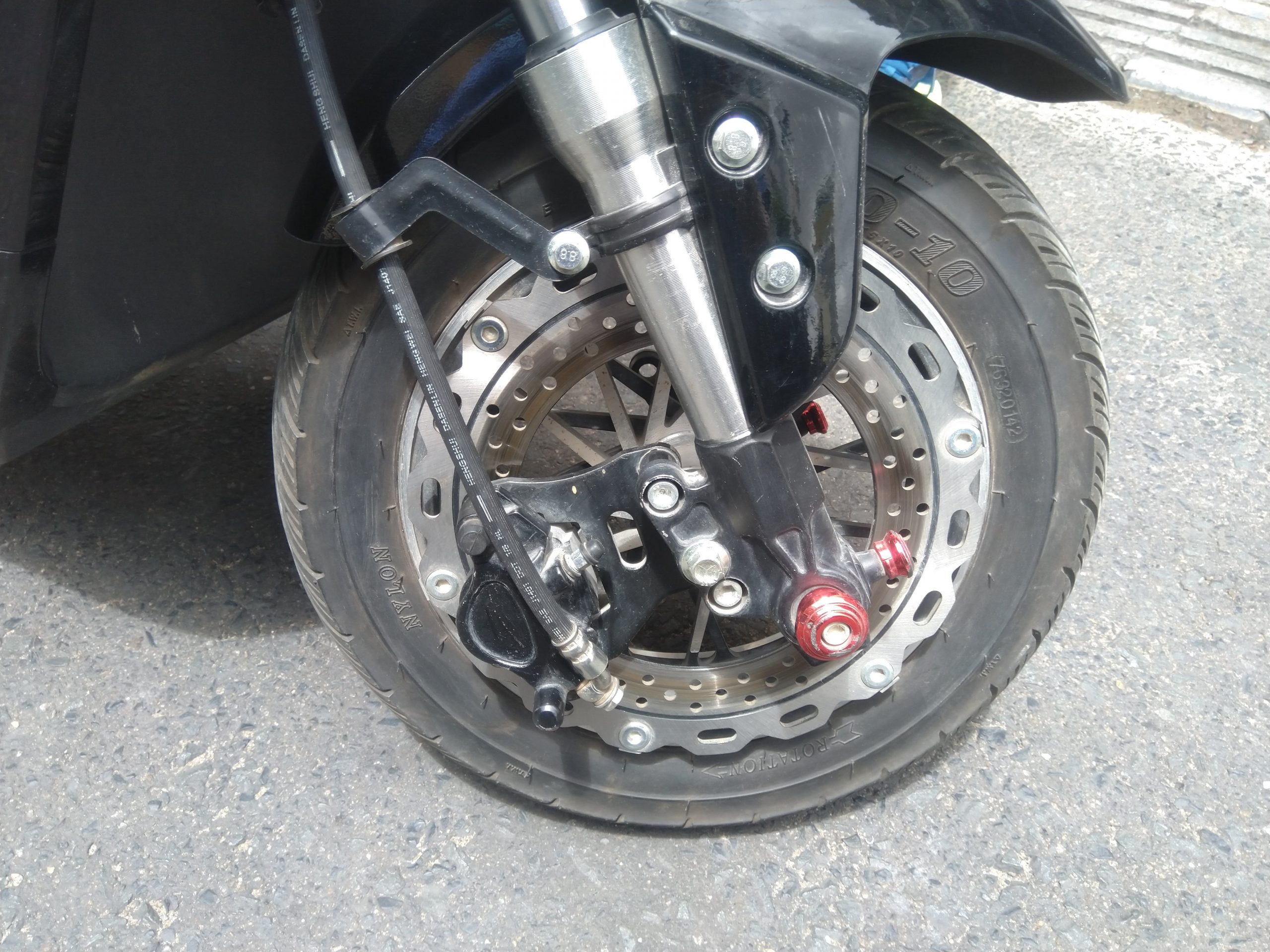
Fantastic brakes. Much stronger than the ones on my current moto. 
The passenger foot rests are hidden. 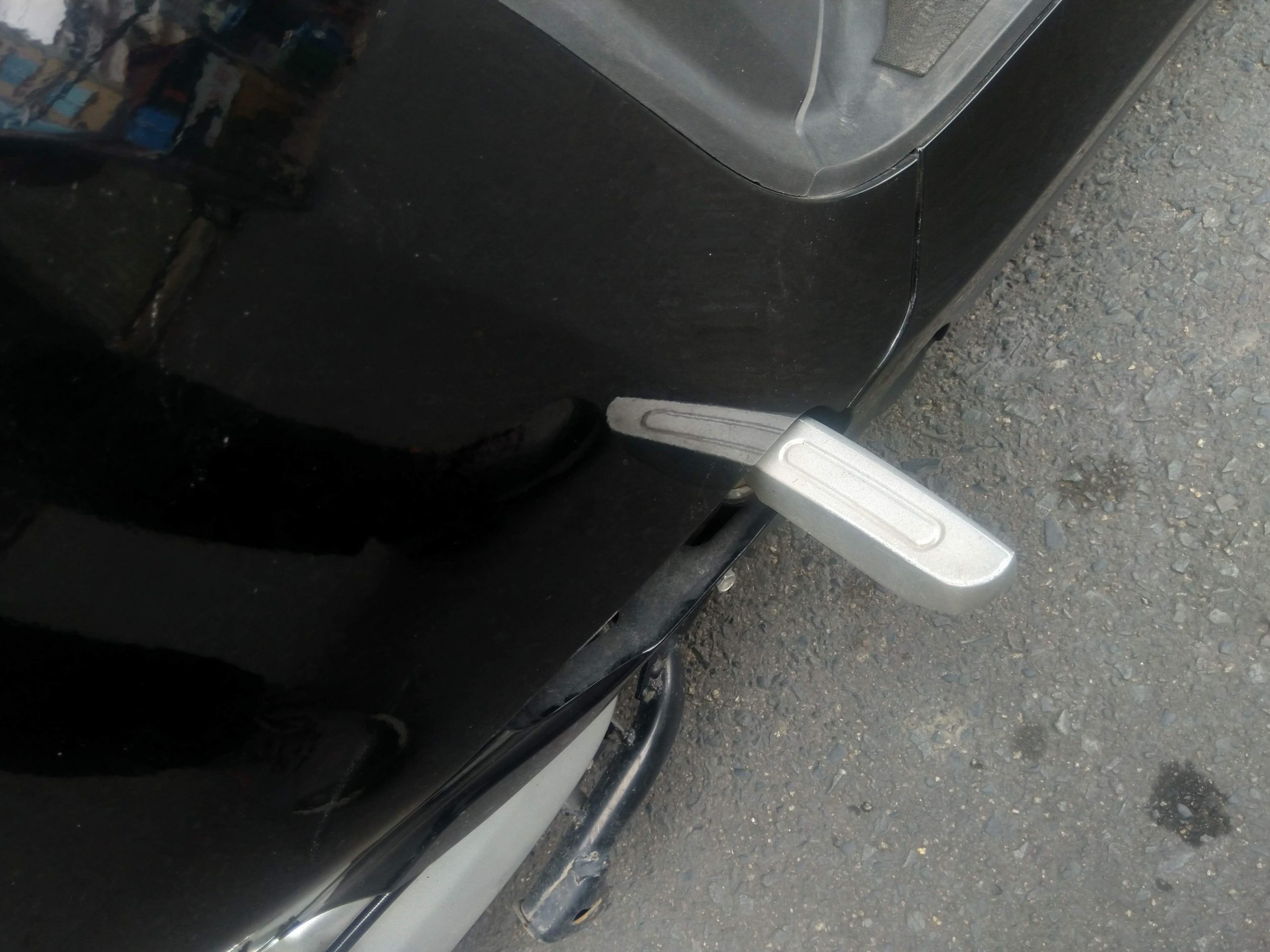
But pop out with a click. 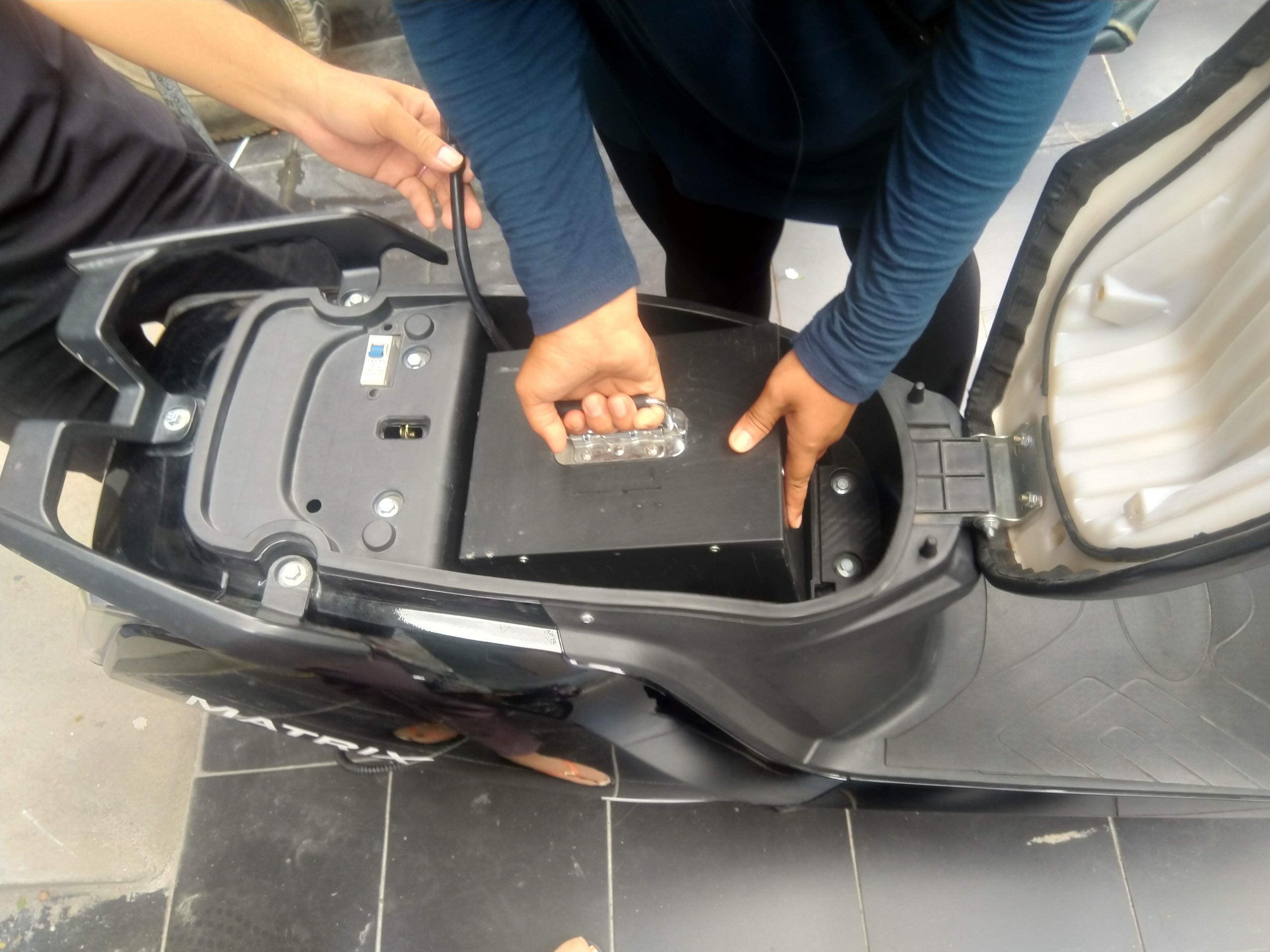
Sliding the battery in. 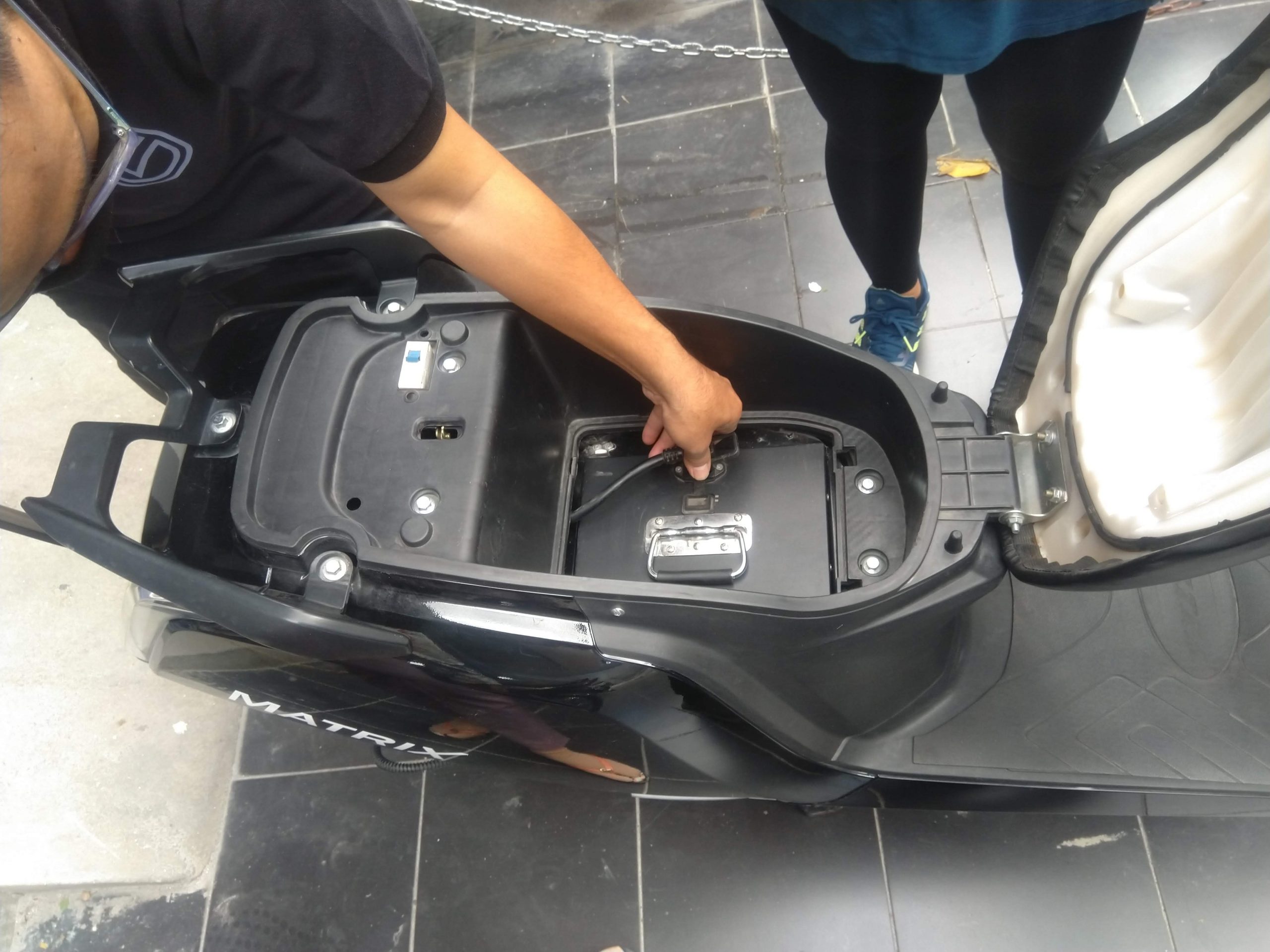
Connecting the battery. (It can charge through a port on the front.) 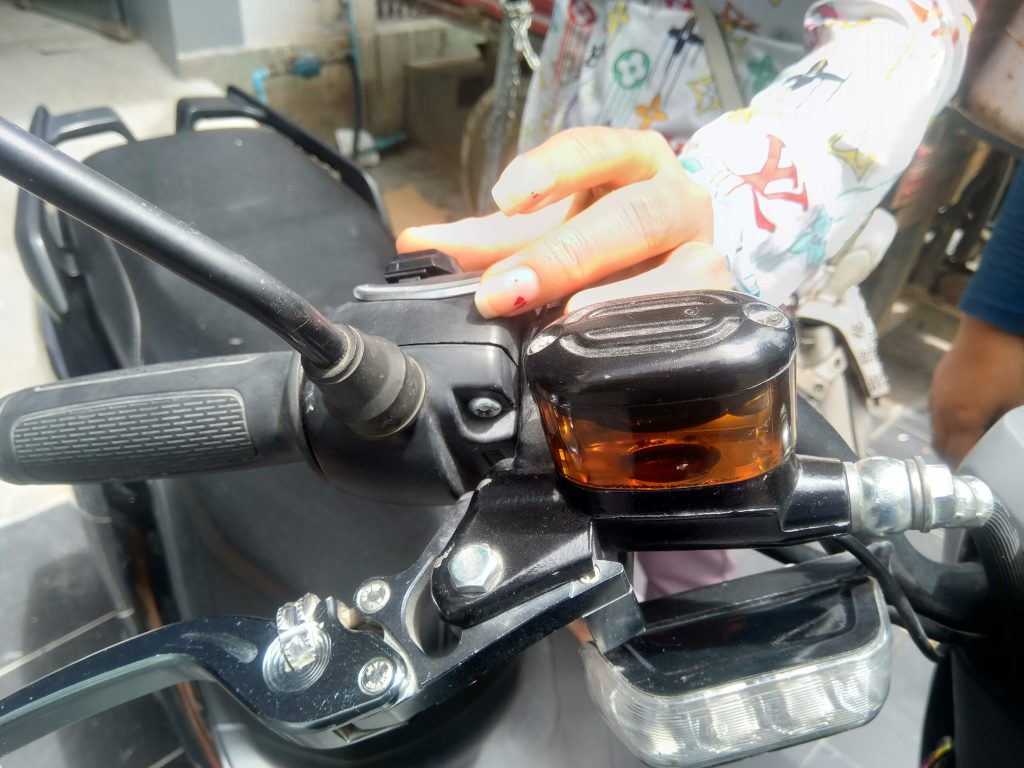
The brake fluid is stored on top. Visible reminder of when it needs changed.
Programming
So switching to electric motos helps MCC Cambodia’s environmental footprint…but how does this fit into the bigger picture? Is this just a case of virtue signaling? While I think there’s value to symbolic measures, I think this works towards systemic change and that we need to buy-into clean technology as soon as it’s viable. Solar panels and electric vehicles are still prohibitively expensive here in Cambodia, but electric motos have become affordable so it’s a good point of entry. There are also a few ways that I see this building towards larger impact.
- Vocational Training: With our local partner ODOV, we’re running a vocational program that trains High School drop-offs on car and moto repair. As soon as COVID-19 permits, we’re going to work with Voltra to add electric motor maintenance and repair to their training curriculum. This creates an ‘ecosystem’ where electric motos can have broader support making them more viable and takes advantage of the fact that Voltra is ‘made in Cambodia’ so we have access to the people building the machine and they want to train local mechanics on electric motor repair and maintenance.
- Early Adopter: This is Cambodia’s electric moto company so supporting them early on helps develop the market, fosters awareness, and starts to build the ‘ecosystems’ needed for new technology. 4 or 5 electric motos isn’t going to make a huge impact on pollution in Phnom Penh but supporting Voltra during the critical start-up phase might make a difference.
- Promotion: We’re going to be inviting partners, national staff, and friends try out the Voltra Matrix. We want to promote its use in Phnom Penh and will be encouraging partners to consider it when they submit grant applications that include moto purchases. As soon as COVID-19 permits, we’ll also plan to visit the Voltra factory as part of our education, vocational, and entrepreneurship programs to share an example of ‘made in Cambodia’ green business. We can hope that it inspires Cambodian youth to try their own environmentally friendly ventures.
Alternatives
There are other electric motos available in Phnom Penh but we decided to go with Voltra after researching the options. Of course, being ‘made in Cambodia’ is a big selling point but the fact that Voltra is actively looking to train mechanics in electric motor repair and maintenance helped click this in with our broader programming. Voltra is also less expensive due to not having to pay an import tax.
The other common electric motos are from China, Malaysia, Singapore, and the Philippines. We’ve heard that there are some quality issues with the models from China; which are inexpensive but have high rates of hardware failure. The Malaysian models tended to be more expensive but had strong performance and interesting features. There is a very neat electric moto from the Philippines that included built-in solar panels, something that might be viable in the countryside, but it was too cost prohibitive for us to consider.

The electronic moto from Singapore was very impressive but uses a swap system for the batteries that we didn’t want to buy into (basically, you refuel by stopping at a ‘station’ and swapping batteries for an instant recharge). It’s a neat model and ecosystem, but that wasn’t enough to dissuade us from Voltra.

Voltra also has an ‘e-bike’ that’s about half the price of the Matrix. It can’t carry heavy loads and is slightly less efficient, but it’s something we’re considering for individual use in the future.
I’m impressed! Hope they prove sturdy and reliable. Wish more people would consider this kind of alternative!
Reliability is my major concern and one reason we decided on Voltra. Not many moto mechanics are familiar with electric motor repair so it’s good to have access to the engineers who designed it. Especially since they’re actively seeking to train moto mechanics in electric motor repair.
Excellent post, thanks for the pictures, features, and above all, the good vision to support both local and sustainable practices in the present and future! God bless and enjoy the ride!
Thanks for your comment, Pastor Mike! We should be able to pick the e-moto up any day now but it will be awhile before we can drive it because it takes some time to register for the NGO license plate.